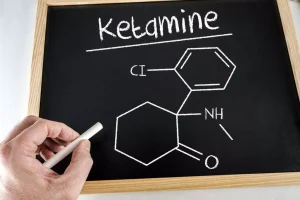Consistent with this hypothesis is the finding that severity of alcohol and drug withdrawal symptoms may be a powerful marker of neuropsychological impairments in detoxified older human adolescents and young adults (Brown et al. 2000; Tapert and Brown 1999; Tapert et al. 2002). Juvenile rats exposed to heavy bingelike episodes of ethanol have greater damage than adults in frontal-anterior cortical regions, including the olfactory frontal cortex, anterior perirhinal, and piriform cortex (Crews et al. 2000). Thus, the immature brain may be more susceptible to binge ethanol-induced neurotoxicity, although the mechanisms are unknown. The idea that a particular ‘addictive personality’ leads to the development of alcohol dependence is popular with some addiction counsellors, but does not have strong support from research.
- For people with severe alcohol dependence and/or significant physical or psychiatric comorbidity, this may require assisted alcohol withdrawal in an inpatient or residential setting, such as a specialist NHS inpatient addiction treatment unit (Specialist Clinical Addiction Network, 2006).
- Studies have reported the positive effects of these proactive behaviors in lowering alcohol consumption in individuals with problem drinking and decreasing the risks of relapse in those receiving treatment for AUD [68,69,70].
- Usually this is based on behaviour over the last 12 months or more, but alcohol dependence could be diagnosed based on continuous daily (or almost daily) use of alcohol over a period of at least three months.
Growth and Endocrine Effects

The DSM-IV definition of alcohol dependence requires significantly harmful impact caused by at least three out of seven target conditions within a single year. Physical dependence on alcohol occurs when the body adapts to its presence, resulting in increased tolerance and potentially severe withdrawal symptoms.1 This dependence can significantly impact various aspects of a person’s life, including health, relationships, and daily functioning. Understanding the tools and strategies for recovery, as well as recognising warning signs and triggers, is crucial for anyone dealing with alcohol dependence.
- For example, clinical studies have indicated that a history of multiple detoxifications increases a person’s susceptibility to more severe and medically complicated withdrawals in the future (e.g., Booth and Blow 1993).
- Your healthcare provider will determine whether your symptoms match the criteria for substance use disorder listed in the DSM-5.
Recent Activity
Some neurotransmitters are inhibitory—they make it less likely that the receiving neuron will carry out some action. Others are excitatory, meaning that they stimulate neuronal function, priming it to send signals to other neurons. The brain is made of an estimated 86 billion nerve cells—called neurons—as well as https://ecosoberhouse.com/ other cell types. Dendrites branch out from the cell body and receive messages from the axons of other neurons. Thanks to generous benefactors, your gift today can have 5X the impact to advance AI innovation at Mayo Clinic. But as you continue to drink, you become drowsy and have less control over your actions.
Substance Dependence Symptoms

Individuals with alcohol misuse have reported complex drinking motivation which may simultaneously be of both coping and enhancement nature [121]. This duality may affect learning, thus calling for additional work that can parse out their distinct roles as well as neural correlates. As with other diseases, individuals vary in the development and progression of substance use disorders. Not only are some people more likely to use and misuse substances than are others and to progress from initial use to addiction differently, individuals also differ in their vulnerability to relapse and in how they respond to treatments. For example, some people with substance use disorders are particularly vulnerable to stress-induced relapse, but others may be more likely to resume substance use after being exposed to drug-related cues.
Can You Get Alcohol Poisoning from Binge Drinking?

Within this system, stress induces the release of the hormone corticotrophin-releasing factor (CRF) from a brain area called the hypothalamus. CRF acts on the pituitary gland located directly below the hypothalamus, where it initiates the production of a molecule called proopiomelanocortin (POMC). This compound is processed further into smaller molecules, such as β-endorphin and adrenocorticotropic hormone (ACTH). ACTH is carried via the blood stream to the adrenal glands (which are located atop the kidneys), where it induces the release of stress hormones (i.e., glucocorticoids) that then act on target cells and tissues throughout the body (including the brain). The main glucocorticoid in humans and other primates is cortisol; the main glucocorticoid in rodents is corticosterone. This experimental design can be further modified by the use of discriminative contextual cues.
- The problem, we argue, is caused by confusingly-worded International Classification of Diseases (ICD)-9 and ICD-10 codes, which reflect a general misunderstanding of the difference between addiction and physiologic dependence.
- However, even a mild disorder can escalate and lead to serious problems, so early treatment is important.
- In both males and females, puberty is a period of activation of the hypothalamic-pituitary-gonadal (HPG) axis.
- Going too long without eating leads to low blood sugar, which can make you feel more stressed or anxious.
In this guideline these definitions of severity are used to guide the selection of appropriate interventions. It can lead to serious health issues, including liver disease, heart disease, and digestive problems. For those seeking help, centres like Madison Recovery Center offer comprehensive treatment programmes that address both the physical and psychological facets of alcohol dependence.
Unfortunately, satisfying these cravings increases the risk of alcohol poisoning. These diseases disrupt liver function, causing serious damage to the body over time. Notably, women have a higher risk of developing alcohol-induced liver injuries than men. These effects account for the euphoric or intensely pleasurable feelings that people experience during their physiological dependence on alcohol initial use of alcohol or other substances, and these feelings motivate people to use those substances again and again, despite the risks for significant harms. Adolescents tend to drink larger quantities on each drinking occasion than adults; this may in part be because adolescents are less sensitive to some of the unpleasant effects of intoxication.
- Compounds targeting the glutamate systems also are being used in the treatment of alcohol dependence.
- Not only are some people more likely to use and misuse substances than are others and to progress from initial use to addiction differently, individuals also differ in their vulnerability to relapse and in how they respond to treatments.
- Alcohol is a psychoactive substance with properties known to cause dependence (or addiction).
